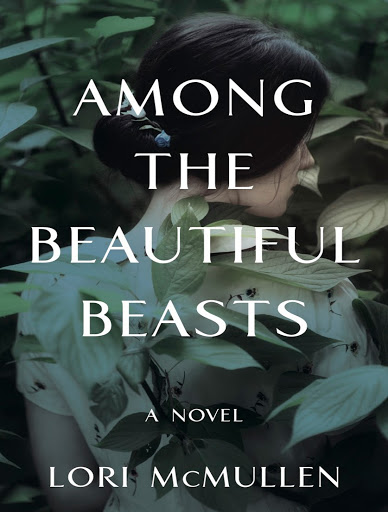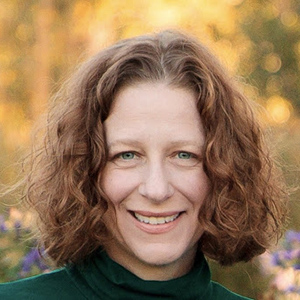 CHICAGO, IL–Set in the early 1900s, “Among the Beautiful Beasts” (She Writes Press, June 1, 2021) reveals the untold story of Marjory Stoneman Douglas, a woman who would become known for her tireless advocacy work in protecting the Florida Everglades.
CHICAGO, IL–Set in the early 1900s, “Among the Beautiful Beasts” (She Writes Press, June 1, 2021) reveals the untold story of Marjory Stoneman Douglas, a woman who would become known for her tireless advocacy work in protecting the Florida Everglades.
After spending her childhood in New England nursing her mother, who fades into madness, Marjory marries a swindler thirty years her senior. The marriage nearly destroys her, but Marjory finds the courage to move to Miami, where she begins a new life as a journalist.
Buoyed by a growing sense of independence and an affair with a rival journalist, Marjory embraces a life lived at the intersection of the untamed Everglades and the rapacious urban development that threatens it. When the demands of a man once again begin to swallow Marjory’s own desires and dreams, Marjory sees herself in the vulnerable, inimitable Everglades, and knows she must choose between a life of subjugation or a leap into the wild unknown. Told in chapters that alternate between an urgent midnight chase through the wetlands and extensive narrative flashbacks, “Among the Beautiful Beasts” expertly weaves together suspense and thoughtful reflection.
“An atmospheric and engrossing story about the experiences that shape us, the passions that move us, and the discoveries that bring meaning to the rest of our lives.”
— Laura Munson, bestselling author of Willa’s Grove
“Among the Beautiful Beasts”
Lori McMullen | June 1, 2021 | She Writes Press | Historical Fiction
Paperback | ISBN: 978-1647421069 | $16.95
 Lori McMullen grew up in unincorporated Dade County, outside of Miami. Growing up, her family took an annual trip to the west coast of Florida. McMullen was inspired by the scenic drive along Route 41, a two-lane, pot-hole ridden stretch of road that bisected Everglades National Park and Big Cypress National Preserve. South Florida found its way into her heart and into her writing, even after she left Miami to attend Dartmouth College and Harvard Law School. McMullen currently lives with her husband and three daughters in Chicago. Her short stories have been featured in the Tampa Review and Slush Pile magazine. “Among the Beautiful Beasts” (2021) is her first novel. For more information on her life and work, please visit: https://www.lorimcmullen.com/
Lori McMullen grew up in unincorporated Dade County, outside of Miami. Growing up, her family took an annual trip to the west coast of Florida. McMullen was inspired by the scenic drive along Route 41, a two-lane, pot-hole ridden stretch of road that bisected Everglades National Park and Big Cypress National Preserve. South Florida found its way into her heart and into her writing, even after she left Miami to attend Dartmouth College and Harvard Law School. McMullen currently lives with her husband and three daughters in Chicago. Her short stories have been featured in the Tampa Review and Slush Pile magazine. “Among the Beautiful Beasts” (2021) is her first novel. For more information on her life and work, please visit: https://www.lorimcmullen.com/
In an interview, Lori McMullen can discuss:
- What inspired her to write about Marjory Stoneman Douglas
- How Stoneman Douglas’s life in the early 1900s is relevant to our contemporary culture
- Her thoughts on the tragedy that occurred at Marjory Stoneman Douglas high school in 2018, and the hope that still remains
- What she hopes readers will take away from Marjory’s life story
- Resources for those looking to dive deeper into environmental activism
- Her plans for the future
An Interview with Lori McMullen
1. What inspired you to write about Marjory Stoneman Douglas?
In the writing classes and fiction workshops I’ve taken over the years, I’ve always been told to write what I know. When I decided to plunge into creating a novel, I reinterpreted that advice a little so that it became write what I know I’m passionate about. I know I am passionate about the stories of norm-breaking women, about the utterly unique and fragile beauty of the Everglades, and about fiction that is transformative for the reader. These passions all seemed to point in the same direction: to Marjory Stoneman Douglas, a South Florida icon whom I’d learned about as a child in my Miami elementary school. When I began to dig beyond the well-known facts of her late-in-life achievements and learn about the person she was before becoming an environmental activist, I knew I’d found a truly remarkable woman whose early story I needed to tell.
2. Why is it crucial to keep Marjory’s story alive? What can we learn from her early activism and her accomplishments?
If you look at the arc of Marjory’s life, what you find is that the tragedy, hardship, and trauma of her early years gave her the empathy and the impetus to advocate for something greater than herself in her later years. More specifically, Marjory understood, through experience, what it felt like to be vulnerable, to be used, to continually sacrifice herself for the benefit of others, so when she became familiar with the Everglades in the midst of the South Florida land boom of the 1920s, Marjory understood that the wetlands were facing the same kind of fundamental threat to their existence that she had faced. She knew she could be their voice because their cry was the same.
We need a similar call to action now, as humanity faces threats as existential as climate change. Marjory provides an example of how individuals can draw on their own life experiences to transform enormous global issues into personal causes. Then, when we’re all moved to action, change can really happen.
3. In 2018, a deadly event took place at Marjory Stoneman Douglas High School in Parkland, Florida. What do you make of the tragedy and how does it relate to Marjory’s own life?
There is an extraordinary parallel between Marjory’s experience advocating for change before the Florida legislature and the experience of the Parkland survivors doing the same almost one hundred years later. In the spring of 1916, Marjory traveled to Tallahassee to argue before a joint committee of the state legislature in favor of women’s suffrage. Her testimony was completely ignored. By Marjory’s own account, the male legislators did not even listen to her, and Florida was one of the last states to ratify the 19 th amendment – in 1969.
Parkland students had a remarkably similar experience in 2018. Less than a week after the mass shooting at the high school that bears her name, one hundred survivors traveled to Tallahassee to urge state legislators to enact stricter gun control laws. The state legislators knew the survivors were coming, yet by the time the teens had arrived at the capital, the legislative body had already voted along party lines to reject advancing a bill that would ban large-capacity magazines and assault rifles.
Even beyond this parallel, however, there is profound significance to be found in the fact that this particular high school is connected to Marjory. Like Marjory, the Parkland survivors have been shaped by the horrific events of their young lives, and for many of them, this will lead to a lifetime of impassioned advocacy and activism. I have no doubt that Marjory Stoneman Douglas would be proud to have her name associated with these determined young people.
4. “Among the Beautiful Beasts” is told in a compelling writing style that blends thoughtful reflection with urgency and suspense. Why did you choose this style of narration?
This style of narration both serves the story and indulges my guilty pleasure as a writer. In terms of serving the story, the short, recurring chapters that urgently track a midnight chase through the Everglades drive the narrative forward. The reader isn’t sure who is chasing Marjory, or why, and as the details of her life unfold in the reflective chapters, the chase chapters take on new meaning. This continues until the threads merge and the story reaches its climax. In terms of indulging me as a writer, I love to write prose that verges on poetry. I love creating scenes that are sensory and palpable. I don’t think this style of writing is sustainable, however, for an entire novel, so by inserting the urgent and suspenseful chase chapters in short bursts throughout the book, I was able to give in to these poetic impulses without weighing down the whole story.
5. For those interested in learning more about Marjory’s life, or about conservation efforts in the U.S., where should they look?
Friends of the Everglades is a fantastic organization whose mission is to “preserve, protect, and restore the only Everglades in the world.” The group was formed by Marjory in 1969 and continues to be a forceful advocate for the environmental health of South Florida.
I’d also encourage people to read “River of Grass,” which is Marjory’s masterpiece. Published in 1947, the same year the Everglades became a national park, the book is an essential part of the environmental literary canon. The book is also, I believe, a love story – only someone who is utterly besotted could write about a place with such nuance and compassion.

A former award-winning journalist with national exposure, Marissa now oversees the day-to-day operation of the Books Forward author branding and book marketing firm, along with our indie publishing support sister company Books Fluent.
Born and bred in Louisiana, currently living in New Orleans, she has lived and developed a strong base for our company and authors in Chicago and Nashville. Her journalism work has appeared in USA Today, National Geographic and other major publications. She is now interviewed by media on best practices for book marketing.

